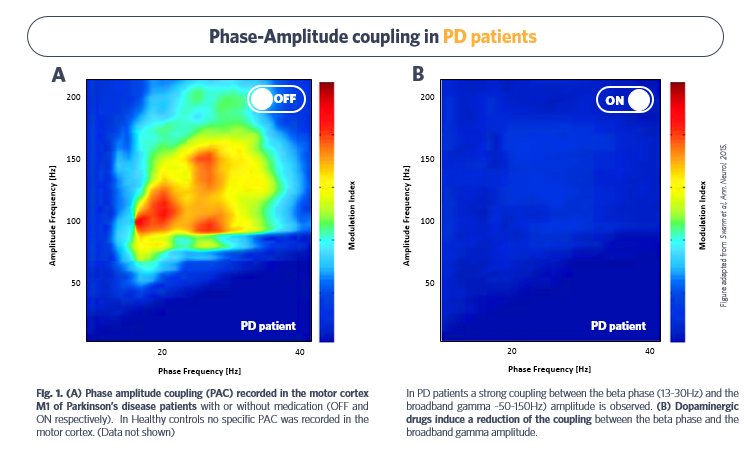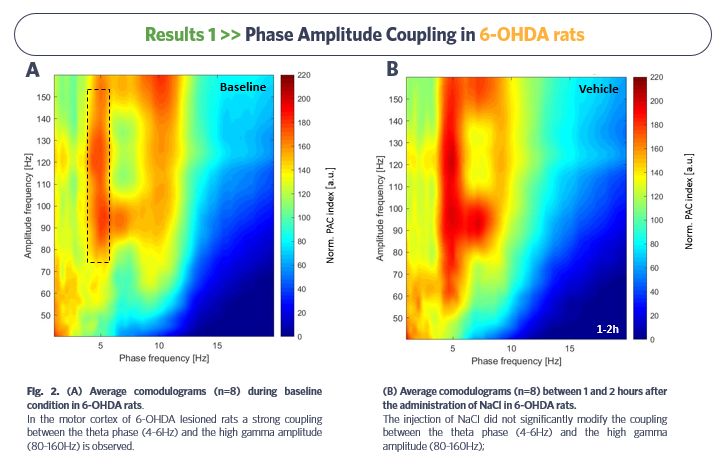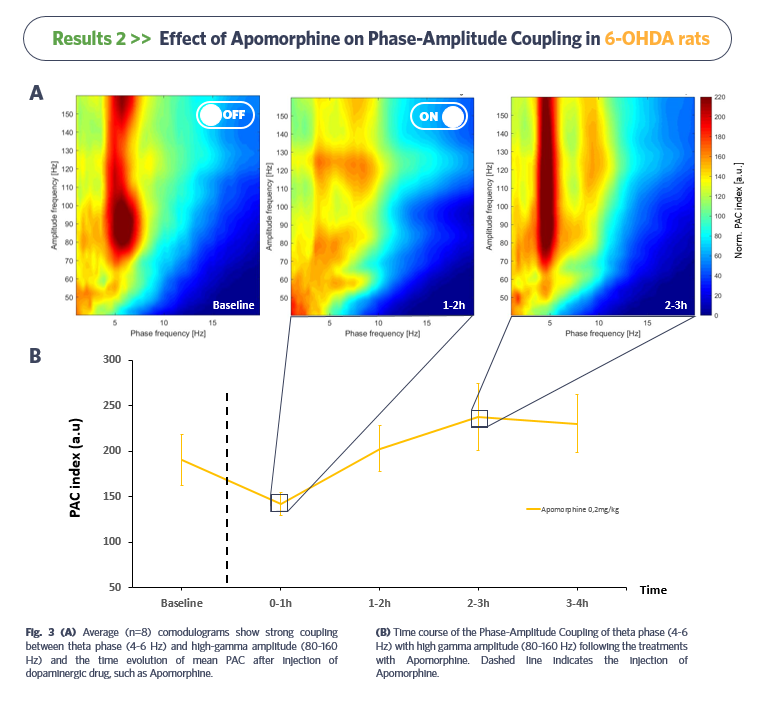Welcome to
synapcell blog
Home » Resources / Blog / Phase Amplitude Coupling (PAC)
Phase-amplitude coupling can help study the interactions between neuronal oscillations. It describes a phenomenon whereby the amplitude of higher frequency activity is modulated by the phase of lower frequency activity, providing relevant information on Brain connectivity.
Involved in sensory integration, PAC is observed in rodents, monkeys, and in humans.

Exacerbated phase-amplitude coupling between beta-phase (13-30 Hz) and gamma-amplitude (50-200 Hz) has been characterized in the motor cortex of PD patients.
A strong coupling between the phase of theta (4-6Hz) and the amplitude of high gamma (90-160Hz) in the ipsilateral motor cortex of 6-OHDA lesioned rats.

In addition, anti-parkinsonian drugs like L-Dopa, apomorphine or SKF-38393-2, significantly suppressed this theta-gamma PAC.


This theta-gamma PAC signature in an animal model of PD can be used as a new translational biomarker, thus providing a stable, quantifiable, reliable and objective endpoint for the development of new therapies against PD.
